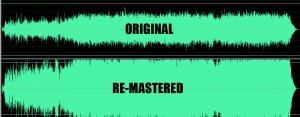Everything sounds the same: Loudness and Modern Music
Following up on our introduction to thinking about technology and the sound of music, I wanted to post a few articles about the so called “loudness wars” that have been unfolding in music over the past few decades. It’s an interesting way of thinking about how we listen to music and how music sounds to us today.
The idea of loudness has to do with the dynamic range, or the distance between the loudest and the quietest part of a piece of music. Over the past few years, this range has been reduced. Often by means of digital manipulation that has made the ‘quiet’ parts louder and loud parts even louder. This is a process called dynamic range compression. Here’s a short video that explains the process:
There have been a number of articles published on the subject over the years, and a variety of musicians and critics have spoken about the problem with turning up the volume on a recording when it is mixed. This article is a good overview of the debate.
While a seemingly minor thing, it is something that has effected the way that music made over the last decade sounds and how we listen to it. Some have argued this is one of the reasons why contemporary pop music sounds so monotonous, because there’s not range in the dynamics of modern recordings and the sounds are being shorn of their subtlety so that they stand out to us in a crowded room, while driving in the car, or when heard through tiny laptop speakers.

A comparison of an original recording and a remastered recording in which compression has been used in order to increase the volume of the recording.
